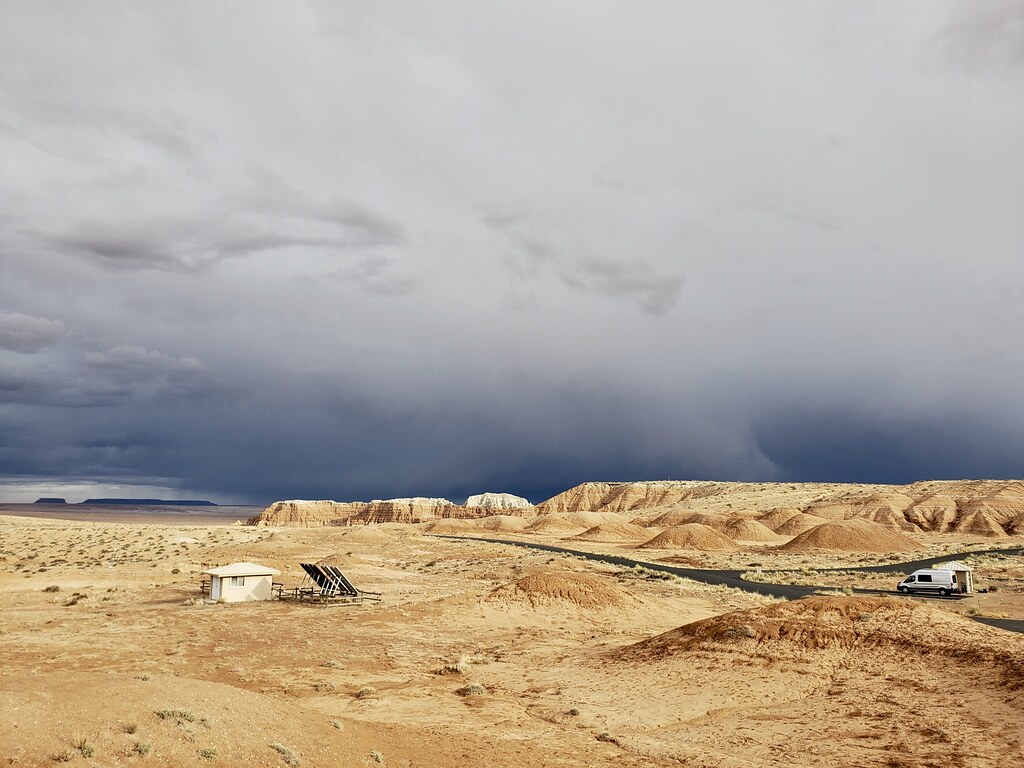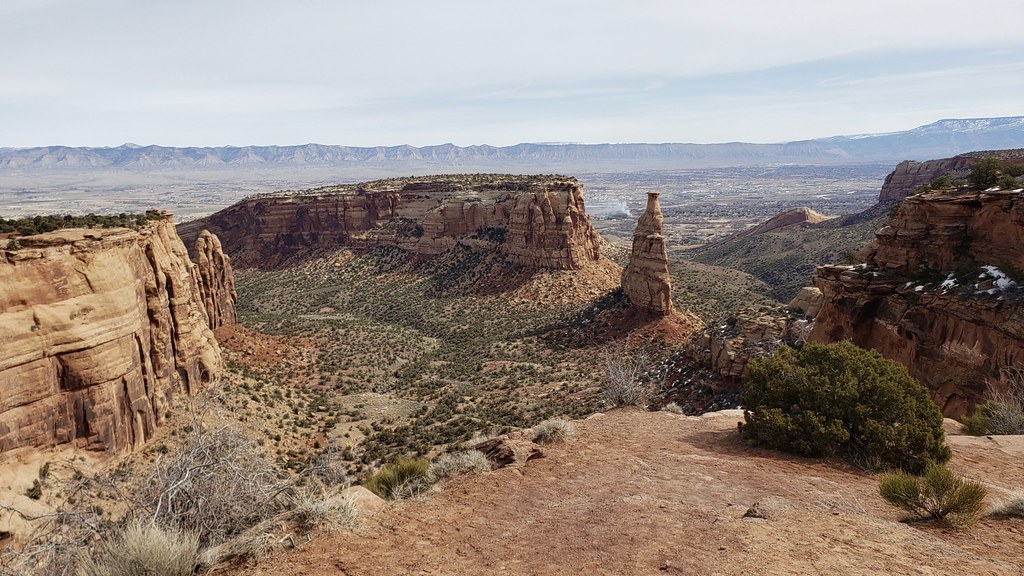Spring break
The week before last was Poudre School District's spring break. My family and I took a road trip over the Rocky Mountains to spend 3 days in the desert canyons of Southwestern Colorado and Southeastern Utah.
Our first destination was Goblin Valley State Park on the southeast corner of the San Rafael Swell. We arrived with plenty of time to set up our tents and play hide-and-seek among the sandstone hoodoos. If you've ever watched the movie "Galaxy Quest", you've seen Goblin Valley. It is a remarkable spot and well worth a visit. The campground has a few upgrades since my last visit about 25 years ago. There are showers, a disc golf course, and every campsite has a shade structure.

Goblin Valley, 2022-03-15

Solo goblin
The Goblin Valley S.P. campground was our base for exploring canyons of the nearby San Rafael Reef. I wanted to take my family to Little Wild Horse Canyon and go up the narrows if the weather allowed. I've hiked through it twice, in 1988 and in 2004. Nobody else in my family had been in the canyon before but were intrigued by the hype.
Our first morning was a bit cold and drizzly, but by ten the weather was improving and we loaded into our minivan to drive to the Little Wild Horse Canyon trailhead a few miles southwest of the campground. We arrived in dry and mild weather and determined that we would make a go of the Little Wild Horse and Bell Canyons loop, with the option of turning back early if conditions weren't great.

Heading up Little Wild Horse Canyon, 2022-03-16
Little Wild Horse Canyon's existence is almost impossible. Because it is just steep enough and sees enough water flow, stretches of it are entirely scoured of sand and soil, bare sculpted sandstone is the only surface. But no part of it requires ropes or other technical gear or swimming. It's unique in this way. There are more less steep and less thrilling canyons and a few more thrilling and more technical canyons on the edge of the San Rafael Swell. See this Zero Gravity canyon video for example. But there are no other canyons with such easy access to miles of narrow, twisting sandstone slots.
Though Little Wild Horse Canyon is dry most of the time, flash flooding is a real hazard. I've seen videos on YouTube showing people hiking through knee-deep running water. And there was a tragic, fatal accident as recently as May, 2020.

Crossing a puddle deep in the narrows
After a few miles, Little Wild Horse Canyon ends, and the trail climbs out of Little Wild Horse Creek and over to the next drainage, Bell Creek. This creek also carves its way through the San Rafael Reef's Navaho sandstone formation. The narrows are shorter than Little Wild Horse's, but are still a lot of fun.

Hiking out Bell Canyon
We got out of the canyons about 30 minutes before serious rain started on the Swell. A strong storm cell passed north of our campground after we returned and started cooking dinner. Intense lightning lit up this storm and there was obviously some heavy precipitation along with it. I don't know whether these storms caused any flooding in the canyons we hiked.

Late afternoon thunderstorm
The next morning we broke camp, did some more hiking and running in the area, and drove to spend a night in Fruita, Colorado, at the base of Colorado National Monument. Fruita is a town we've driven by many times. This was our first stay. I like the place a lot. After some beer, pizza, Netflix (Shang-Chi and the Legend of the Ten Rings), and sleep, we packed up and left Fruita to drive the road around the rim of the Monument's canyons.

Monument Rock, Colorado National Mounument, 2022-03-17
Ruth did the driving because she has nerves of steel and I get vertigo. Going counter-clockwise, as we did, puts you on the inside of the road. If you go the other direction, it's 25 miles of winding road with nothing but hundreds of feet of air just inches from your right wheels. Exciting! The views are amazing.

The Coke Ovens
We'll be coming back to Colorado National Monument. There are a lot of canyons and arches to see and trails to be run.